The Third Force
On the 7th of February 2007, HSBC
Holdings became the world’s first financial institution to announce colossal
losses owing to the unprecedented number of subprime mortgages it had written.
The announcement came less than five months after the bank triggered its first
ever profit warning by making public the closure of its Arizona and South
Carolina based Decision One Mortgage unit
Then the world’s third largest bank in
terms of net asset worth, the British multinational attributed these losses to
a spike in delinquencies by homeowners who, according to the bank, couldn’t
cope with adjustments to their mortgage interest rates. The announcement opened
a floodgate of reactions and criticism by investors who were overwhelmed that a
bank reputed for its stringent assessment protocols and rigorous standards of
performance could have succumbed to such a high rate of defaults.
In a bid to defend the bank, a group of
analysts from Dealogic (refer part eight, link below) claimed to trace most
delinquencies to people affected by the decline in manufacturing throughout the
US. However, documents my team sighted revealed that not only did the bank
approve mortgages in neighbourhoods that were destitute of economic activity,
those who were granted loans didn’t even come close to meeting the minimum
criteria set by the bank.
Years later, on the 5th of February
2016, New York attorney general Eric Schneiderman announced that the bank had
been fined USD470m (£325m) for its role in “abusive mortgage practices.” What
Schneiderman failed to mention, however, was the billions the bank made through
systemic fraud schemes that assisted billionaires, arms dealers, terrorists and
drug lords from around the world spirit out dirty money from the Mideast.
Most of that wealth was secretly
channelled to anonymous entities based in Panama and the British Virgin Islands
that were linked to world renowned billionaire George Soros. Comprising largely
of hedge funds, these entities converted most of the ill-gotten wealth into
fixed assets in the United States (US) and used those assets as ‘security’ to
purchase bonds through the secondary mortgage market.
Because of this, many investment banks
across the US began snapping up a large portion of HSBC’s mortgage debt and
used the mortgage as backup to issue a large number of bonds. Through this
scheme, HSBC was able to pull all its dirty money into legitimate assets
without anyone suspecting anything.
The net result was the creation of a
housing bubble that soared property prices all across the US, including prices
of assets purchased by the hedge funds. In order to inflate that bubble, Soros
got the funds to keep on purchasing bonds despite some of them being
ridiculously priced. You’re reading all of this for the first time ever in
Malaysia Today.
How it all began
When HSBC first announced losses, its
Chief Executive, Michael Geoghegan, promised investors that “everything was
under control,” that “things would not deteriorate any further.” However, the
situation was not as contained as Geoghegan had implied.
My team discovered a trove of documents
that revealed how Geoghegan’s team had approved mortgage lending to persons who
were already in default with financial institutions. It puzzled my team that
HSBC signed these people up anyway. The fact that they numbered in the thousands
struck off the possibility that the bank had erred in its judgement or factored
in guarantees from third party individuals.
Then, an activity log we stumbled upon
revealed that the bank had organised massive promotional tours between the
fourth quarter of 2004 and the first quarter of 2005. It shocked my team that
the tours were specifically targeted at people from downtrodden communities in
rural townships. A separate trove of documents showed clearly how these people
were conned into refinancing their homes through adjustable-rate mortgage
schemes.
To lure this group, banking officials
spoke only of the cash homeowners would receive should they refinance their
homes. They deliberately neglected to explain that the mortgages would ‘reset’
after two years at double the interest rate. As a result, many were caught
off-guard when interests began to soar late in 2006.
Squeezed for cash, those affected sought
recourse to the bank as their mortgages lapsed into defaults. Rather than work
out a rescue package, HSBC began serving these people eviction notices, knowing
well in advance that they could not afford the legal fees required to trigger
lawsuits against the bank.
Seeing no alternative, a large group of
defaulters began filing petitions against the bank through interest groups that
had links running deep through Washington. When Geoghegan came to know of this,
he secretly instructed his subordinates to bulldoze through foreclosure
documents without the need to properly review paperwork. By mid 2007, millions
of Americans found themselves being chased out of their homes without ever
being offered a recourse by the bank.
None of what happened ever made it to
the media simply because the bank conspired with US authorities and Soros to
keep such information from the public. Basically, not even the CEO of your
local bank knows any of this because much of what the analysts reported was
fabricated, the same way Clare Rewcastle Brown of the Sarawak Report fabricates
stories against 1MDB.
To what extent was Soros responsible for
the crisis?
While HSBC may have been responsible for
creating a housing bubble, it was not alone in the scheme of things. When
prices of property began to soar, a large number of financial institutions got
greedy and began writing an unrealistic number of low quality (subprime)
mortgages. They were able to do this because a large number of investment banks
were willing to purchase those mortgages.
Among institutions that dived into the
subprime mortgage scene were JPMorgan Chase & Co (JP) and The Goldman Sachs
Group, Inc (Goldman), two of America’s foremost financial institutions by net asset
worth (refer part eight). Barclays became the second British multinational
after HSBC to enter the scene, while The Bear Stearns Companies (Stearns), Inc
became the first New York based financial institution to set up hedge funds
just for the purpose.
The funds – the Bear Stearns High-Grade
Structured Credit Fund (SCF) and the Bear Stearns High-Grade Structured Credit
Enhanced Leveraged Fund (SC-SCF) – were inspired by the bank’s then chairman,
James E. Cayne, though many are unaware that it was Soros who got Cayne to set
the funds up in 2004.
Stearns acted as an investment bank and
snapped up a large chunk of mortgage debt from several financial institutions.
Using these mortgages as backup, Stearns went on to issue bonds (securities)
and sold them to its own funds and to institutions that were enticed by the
booming property market. On the surface, there seemed to be no cause for
concern as everything appeared legal and orderly.
However, unbeknown to many, Soros
secretly channelled ill-gotten wealth from companies linked to HSBC into the
SC-SCF and the SCF. Both the funds went on to convert that wealth into fixed
assets through developers linked to Stearns. As the housing bubble ballooned,
so did the prices of the assets and the confidence with which the two funds
stocked up on bonds through the secondary mortgage market.
Two years later, Soros got the chair and
cofounder of The Carlyle Group (Carlyle), Daniel A. D’Aniello, to follow suit
by establishing the Carlyle Capital Corporation (CCC), yet another hedge fund
that appeared to have an insatiable appetite for subprime mortgages. Like
Stearns, the CCC helped Soros pull millions and millions of dollars from Panama
and the BVI into legitimate assets through the US financial system.
Now, Soros was not alone. He was
assisted by Marcus Ambrose Paul Agius, the current non-executive director of
the British Broadcasting Corporation, or the BBC. Marcus joined Barclays on the
1st of September 2006 as its non-executive director and succeeded Matthew
Barrett as chairman from the 1st of January 2007.
By then, Marcus had already grown some
deep roots within the banking fraternity through his father in-law, Major
Edmund Leopold de Rothschild. Edmund was a well-placed English financier and a
member of the prominent Rothschild banking family of England. As far as Edmund
was concerned, no major decision that concerned investments into hedge or
wealth funds could be made by any member of the clan without Marcus’ consent.
Despite him wielding a non-executive
position in Barclays, Marcus often got what he wanted owing to his ties with
the Rothschilds. At the height of the housing bubble, Soros got Marcus to agree
on the establishment of a secondary network of offshore entities that would
channel more wealth through the CCC and the Stearns’ funds.
The more wealth these funds got, the
more they invested in the booming property market. Marcus convinced Barclays’
top executives to dive into the mortgage market. Because of him, Barclays was
able to free a lot of its capital and went on to issue subprime mortgages like
there was no tomorrow.
The plan seemed so foolproof that
neither Soros nor Marcus foresaw what came after. Days before HSBC triggered
its first profit warning, the duo got word that the bank had cheated existing
homeowners and loan defaulters into mortgage schemes they could never have
afforded. Both Soros and Marcus knew that shit was about to hit the fan.
In June 2007, Soros watched in horror as
the Stearns’ funds recorded off-the-chart losses and were forced to dump
assets. Trouble spread through Wall Street as JP, Goldman and Citigroup began
loaning tons of money to the SC-SCF and the SCF to contain the housing bubble.
But that only compounded to losses on all fronts as the bubble suffered a total
collapse some time in July 2007.
The market suffered a “complete
evaporation of liquidity” and plunged the banking sector into chaos. The
problem spread worldwide when currencies became the subject of speculation and
experienced sudden and volatile price movements. The 2007 financial crisis had
begun, sparking a general run of investor withdrawals due to the worsening
financial climate.
Many journalists and academicians
vindicated Soros of blame by pointing their fingers at HSBC. But had it not
been for Marcus and Soros, millions of Americans would never have lost their
homes, while hundreds and thousands of Asians would never have been let off by
American multinationals based in the region.
And yes, you’re reading this for the
first time ever in Malaysia Today.






























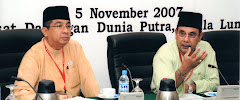


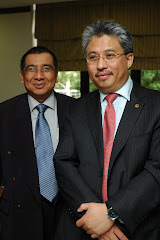
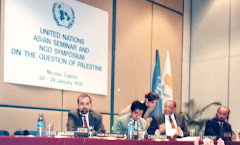
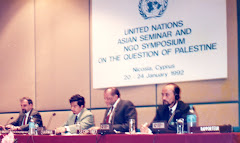


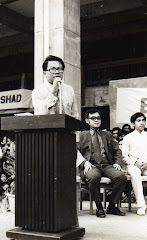


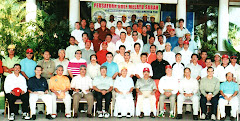





No comments:
Post a Comment